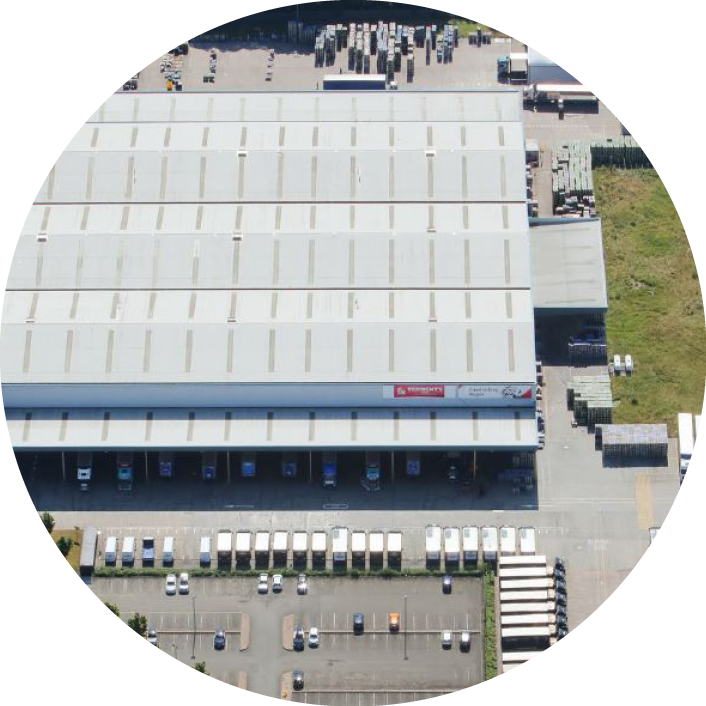
As Lismore Real Estate Advisors celebrates its 3rd birthday, it’s fair to say that it has been a rollercoaster!
There have been plenty of highs – client loyalty, establishing the brand, quality instructions and several awards but there have been plenty of challenges – a global pandemic, War in Ukraine, the disastrous mini budget, the rising cost of debt and most recently the collapse of SVB and Credit Suisse.
Our mantra has always been to try and control the controllables, i.e. continuing to give clients the best possible advice and insights, shaped by our knowledge of what is really happening in the market. One of the perennial challenges has been (and continues to be) how to advise clients around the office sector – which continues to be one of the hardest to call but potentially most interesting. In a market where value is generally difficult to come by, the office sector in the strongest markets is starting to show signs of becoming more attractive, with early evidence of prime yields stabilising.
So, in addition to our usual quarterly market analysis, our focus in this review will be on offices – is pricing starting to find its level, what parts of the market remain liquid, will we see an increase in hybrid working and what opportunities might lie ahead? To help shape our thinking, we are pleased to share a question and answer piece with Andy McKinlay, Chair of Ediston Real Estate.
Three years in and we thought it was time to refresh the look of our Quarterly Review. We hope you like it and that we continue to help you “join the dots…”
Market Overview.
Key Themes
Increased pension fund activity – early signs of local government and established corporate pension funds seeing the current market disruption as an opportunity to acquire quality assets at a perceived discount to longer term average pricing.
Overseas investors being attracted to bank deposits – with investors in the GCC seeing c6.5% for keeping their money in the bank, they currently require a compelling case for investing in property hence the traditional yield/covenant buyer market continues to be “sticky”.
Credit squeeze – the latest banking failures will not necessarily make debt more expensive (swap rates have recently come in slightly) but credit committees will undoubtedly be more discerning when signing off new opportunities.
JV structures becoming more prevalent – as development debt remains challenging, alternative structures, specifically joint ventures, are likely to become more prevalent as the best capitalised investors are prepared to offer developers a slightly more inflated site value in return for a bigger slice of upside come PC. The traditional forward funding route, particularly for debt-backed investors, will remain challenging as the cost of development debt is destructive to returns.
Construction pricing – while we don’t see the recent spike in construction cost inflation falling significantly, there are some encouraging signs that contractors/sub-contractors are becoming more competitive and there is, at least, a plateauing of cost inflation that will be welcome to those developers/
funders/investors trying to make sense of appraisals.
Transaction Volumes
- Q1 saw £324m traded, down 49% on Q1 2022 – it should be noted that it was a very busy start to 2022. Still a reasonable total, considering the macro headwinds.
- Q1 volumes were 11% below the 5 year average.
- Despite a quiet start to the year, we are aware of a number of significant sales being prepped which should see improved volumes and liquidity during Q2.
Pricing
- On a general note, after a significant write-down in values during Q4 2022, the chasm between buyers and sellers had narrowed and it felt like more liquidity was on the horizon. The UK has also been one of the quickest markets globally to re-price, which should ensure it retains its attraction to the international market. The most recent banking events may not increase the chasm but caution on pricing certainly remains in the air.
- After a significant adjustment in Q4 last year, the Scottish logistics market is finding its level with best-in-class yields settling between 5.50-6.00%.
- The picture in retail continues to be mixed, with retail warehousing having a deeper pool of potential investors than the high street. Pricing out of town remains reasonably robust (5.5 – 6.0% for prime) with the very best high street still 6.5%+.
- Prime offices are starting to find their level with renewed interest from some UK Funds for the best product. Like logistics, the range is settling at 5.5 – 6.0% but secondary remains more challenging with pricing needing to be 7.0%+ with scope to improve ESG credentials remaining paramount.
- The Living sector continues to be most sought after (in terms of weight of capital) and robust pricing. For the right product, 4.25-4.5% on BtR and 5.5%+ on PBSA remains the range. Many potential deals in this space are likely to be forward fundings, with pure equity investors the most competitive, albeit a small pool.
Investor Activity
- While most funds have been taking a “wait and see” approach, we have seen a small number of slightly more entrepreneurial investors seeing it as an opportunity to acquire long term holds at comparatively attractive pricing. Annuity buyers remain relatively subdued unless sellers are prepared to accept the new norm of 20 year+ leases, with indexation at 4.0%+.
- Well financed core-plus buyers had been seeing more opportunity in the markets with more realistic pricing. However, we sense that until stability returns to the banking markets, the limited availability of debt will inhibit their activity in the short-term.
- There remains a significant weight of private equity circling the UK with interest but until we start to see some more encouraged selling, it feels this catchment will have to keep their powder dry for a little longer.
Key Recent Transactions.
Despite a quiet start to the year, Q1 saw some interesting themes and significant transactions which we have highlighted below:

Tennents, Cambuslang:
“UK family office acquires mission critical distribution warehouse”
Vendor: L&G
Purchaser: Private Family Trust
Let to: Tennent Caledonian Breweries UK Ltd
Price/Yield: £14.2m / 6.71%
Date: March 2023

Quay 1, Edinburgh:
“Core plus office sale illustrates robust appetite in the Edinburgh market“
Vendor: DWS
Purchaser: Capreon
Let to: Multi let including Apple, Bloomberg, Clevermed, FCA & STV
Price/Yield: £36.8m / 6.50%
Date: January 2023

Overgate, Dundee:
“Dominant shopping centre bought by retail specialist“
Vendor: L&G
Purchaser: Frasers Group
Let to: anchored by Next, Primark & H&M
Price/Yield: £29.5m / 10%
Date: March 2023

Corstorphine Retail Park, Edinburgh:
“Pension fund acquires prime repositioned Edinburgh retail park“
Vendor: Hunter UK Retail Limited Partnership
Purchaser: Lothian Pension Fund
Let to: Lidl, Gym Group, McDonalds, Cancer Research, Pets at Home
Price/Yield: £16.265m / 5.26%
Date: January 2023
The investor view on the office market.
Pricing in the prime office sector is showing signs of stabilising – with this backdrop do you envisage improved transaction volumes in the sector during 2023?
- Most respondents (56.10%) are not anticipating transaction volumes increasing during 2023, however there is more positivity amongst investment managers with 56% expecting volumes to increase.
- A number of respondents commented that whilst they anticipate volumes increasing in H2, any further unexpected economic headwinds are likely to suppress any uplift in transactional activity.
- With inflation forecast to fall significantly by the end of the year and (hopefully) the majority of negative economic news behind us, those who do expect liquidity to improve during 2023, believe that it will only be those offices viewed as truly prime which will trade. However, there are question marks over the quantity of quality stock being brought to market and to what extent the gap between vendor and buyer pricing aspirations has narrowed.
Have values fallen sufficiently in the value-add office space to encourage you to re-visit the sector?
- The overwhelming majority of respondents do not believe that values have fallen sufficiently in the value-add office sector, with 83% needing to see further reductions before considering revising the sector.
- The high level of capex required particularly to improve ESG credentials is contributing to a subdued market. An improving debt environment may lead to leveraged investors considering the sector with those willing to be bold likely to benefit from the pick of any discounted deals.
- With inflation expected to fall substantially over the remainder of 2023, capex costs should stabilise allowing repositioning costs to be more accurately appraised.
Over the next 12 months will hybrid working: increase, decrease or stay the same
- 56% of respondents expect hybrid working to stay the same whilst 37% expect an increase in the move to work from home, at least for part of the week.
- Despite a drive by some corporate occupiers to encourage workers back to the office with significantly improved office fit outs, the working from home trend is expected to persist. Whilst younger workers now expect a hybrid working model, the desire to learn and be seen is likely to play a part in encouraging a return to the office.
- The consensus from respondents is hybrid working is very much a structural change in working habits and there is unlikely to be any significant change to the number of the workers choosing to work from home, at least for a portion of the week. In many instances this has been accepted by employers with businesses reacting by consolidating their office footprints whilst providing a substantially improved office environment.
“Expert view” on office sector re-positioning…

Andy McKinlay
Chair
Ediston Real Estate
What are the most important considerations when assessing office repositioning opportunities?
The key for me is the supply/demand dynamics of the city. Micro location within the city is important but, in cities with low supply and limited pipeline, peripheral buildings which can be properly repurposed to provide a USP in terms of ESG/Wellness and physical environment may work.
Physical constraints and building adaptability are also crucial. The asset must have the capability of providing what the market (occupational and investor) is looking for. Slab to slab height for increased mechanical ventilation, plant space to enable the change from fossil fuel to electric, adequate space for wellness, collaborative space, outdoor space and end of journey facilities must be capable of being provided, otherwise the building cannot be fully re-positioned. Whilst in low supply environments, occupiers in need of space may not manage to tick all requirements, investors in this space are more sophisticated and require a full suite of ESG credentials. Catering for this underwrites the exit and is crucial to development success.
We have witnessed a value correction in the office sector over the last 9 months. In your opinion, is this sufficient to make repositioning opportunities attractive, or do values have to fall further?
I don’t believe the “correction” has gone far enough, and I think Q4 2022 valuations should have been hit harder. In my opinion, secondary office values need to fall much further generally to reflect post pandemic demand and cap ex required to re-position. As ever, each asset should be assessed on individual merit, however there is already a 2 – tier market. Prime, well-let, new builds with strong specifications together with ESG and wellness credentials will trade well – absolute value being dictated by building quality, location, leasing profile and market dynamics. Even buildings delivered over, say, 5 years ago are over-priced (especially at valuation level), as they do not offer sufficient ESG credentials (e.g. they still use gas) and pricing does not sufficiently reflect the cap ex requirement, especially against the background of construction price inflation. There is a hope that, when inflation subsides we will see a drop in prices, but that “deflation” has rarely happened in recent history, except when there was sufficient distress in the construction market e.g. post the GFC. Lack of competition in the Scottish construction market doesn’t help!
Whilst appraising, everyone is attempting to “future proof” buildings which comes at a price, however, the speed of technological advancement will also provide a challenge! What is certain, is that the days of “light touch” refurbishment are “no more”. Many assets which are not capable of providing modern, occupier-led space will be subject to change of use. Smaller businesses occupying small floorplates still need space but most occupiers are now aware that they need to be in the most energy efficient space they can find.
We anticipate further polarisation in this market which will lead to a more pronounced pricing differential.
When looking at repositioning rather than ground up development, what ESG credentials are most important and what benchmarks are you targeting?
We would always look to target best in class credentials. With my aforementioned views on further polarisation, developers must be able to demonstrate market leading attributes. We look to EPC, Nabers, BREEAM/BREEAM (in-use), Wired Score, Air Score, “WELL” accreditation (accreditation is hugely expensive and “WELL” ready/compliant tends to be sufficient) and UK GBC Green Building Standards as benchmarks. Re-positioning existing structures utilising embodied carbon, may be the preferred route of many from a sustainability perspective, but comes with a “health warning” in terms of physical constraints and cost.
Given the evolving occupier market and move to more flexible working, do you think there is greater need for inclusion of flex space in larger office buildings and how do you appraise for this on exit?
Historically, flex space was an “afterthought”, down the pecking order from a traditional leasing offer, but also offered a solution for more compromised space, or for lower floors within existing buildings delivering increased “activation” on ground floors. However, larger buildings with an element of flex provision are now likely to appeal directly to building occupiers and help make tenants more “sticky” as they can readily flex up/down more easily, using the provision to grow or contract within the same building.
In terms of pricing, a small percentage of flex space shouldn’t impact – there are other factors to consider whilst appraising such as lease duration, covenant, fit out etc but, overall, I am of the opinion this now forms part of a building’s overall flexible leasing strategy/re-positioning and should be looked at favourably.
When underwriting, which modelling variable is the hardest to be accurate on at the present time?
Ha! Good question. Until the market settles – most require careful consideration – however, if I had to choose two, exit yield and construction costs. Leasing assumptions are more straightforward as these are dictated by the relevant demand/supply dynamics.
Construction costs still require margin for error, or suitable contingency, and exit yields remain relatively fluid. Rents are arguably one of the easiest inputs – we would only focus on cities with strong supply/demand dynamics, and are confident that larger occupiers are happy to pay for best-in-class product that can achieve a quality working environment with strong ESG and “wellness” credentials. This is essential for businesses to attract and retain talent going forward.
How are you finding appetite from capital partners and lenders for office re-positioning opportunities?
We work with a number of partners who are actively seeking office stock of this nature. We envisage this continuing in the short to medium term. Returns can be attractive for product offering genuine potential but, as ever, you need to choose your battles. Some stock is better suited to alternative use – in the case of vibrant cities with constrained city centres and low supply levels, conversion to alternative use only adds to the rationale for office repositioning, but the strategy has to be carefully thought through in order to create an end product that will perform. General appetite for office repositioning is certainly improving but demand is currently led by prime new builds, and a flight to quality for the best refurbishments in prime locations ie “the best and the rest!”.
The lending market remains challenging, mainly due to the cost of debt relative to entry pricing and a negative cashflow while works are ongoing. Lenders are very focused on the sponsor behind the transaction, the business plan and, increasingly, proposed improvements to ESG credentials – both to ensure the end-product is “fit for purpose”, and to satisfy their own corporate agendas.
There is a drive to take repositioning and ESG credentials as far as economically possible to maximise and protect the exit position. Technological advancement means that a project planned now may easily be superseded during the business plan period. Intelligent use of capital is critical.
“Our view” on office sector dynamics…

Colin Finlayson
Director
Lismore Real Estate Advisors
Is pricing in the prime market genuinely finding its level?
In short, yes, it does feel like it is beginning to although transactional activity is still relatively limited. Tesco Pension Fund’s sale of Halo in Bristol attracted interest from a variety of UK and overseas funds and Capital Square in Edinburgh has attracted interest from a similar pool. Yields are finding a level at 5.5 – 5.75%. There is a little depth now to the pool of investors considering high-quality and well let offices in the regional office market, but focused on cities like Edinburgh and Bristol where supply remains severely constrained.
Several factors are influencing this. Foremost is that occupier demand is still strong for high-quality office space, against a background of limited existing supply and challenging conditions for new development. This is helping investors underwrite rental growth and, therefore, performance. Yield levels are also now comparable to their long-term averages, or even slightly softer, which look attractive for investors who are long-term owners. Although swap rates increased in March, they have now settled again around the 3.5% mark for 5-years. Adding a 200bp margin means that debt is neutral at a yield of 5.5%, becoming accretive assuming rental growth. Additionally, hedging costs have also reduced significantly over the last 3 months and sit at approximately 120 bps, making the regional UK markets attractive again to overseas investors who use hedging, relative to their European counterparts.
Where do we see the opportunity in the sector going forward?
Undoubtedly in refurbishment and repositioning of existing office stock. Occupier demand is clearly strongest in city centres (more so than ever before), and this is where we see the best opportunity. The supply pipeline of new development is restricted – ongoing construction cost uncertainty and contracting finance availability (both from lenders and investors who would forward fund speculative development) will maintain this for the foreseeable future.
Owners of existing assets must invest in them to improve ESG credentials and amenities for occupiers to stay relevant in the market, retain existing tenants and attract new ones. For those who do, tenants are likely to be “sticky” and rental growth prospects good. These improvements are also necessary to maintain liquidity in the investment market.
Will we see more liquidity in the secondary office market this year?
Linked to the points above, not all owners have the capability, capital or desire to undertake substantial repositioning and refurbishment works. This is likely to lead to sale situations and opportunity for value-add focused investors and developers. However, the current squeeze on credit availability and uncertain environment generally, is meaning that many in that space are looking for higher returns, impacting the entry price they will pay. In the short term, pricing in the secondary office market does look like it needs to reduce further in order to find liquidity in the market.
What factors will attract staff back to the office?
There are carrots and sticks here! Corporate and public sector UK is recognising the need and efficiency of having people back in the office in a collaborative environment. Some corporates are becoming firmer with staff and insisting on a return for, say, 3 days each week, but are still grappling with how this is managed and, crucially from a real estate perspective, what this means their space requirements are. Given that staff retention and attraction is key in labour-constrained markets, corporates are tending to be quite careful about the implementation of this.
Many corporates and service firms have recently, or are in the process of, upgrading to new or refurbished buildings offering a better quality environment and in-building amenities. Fit-out has also evolved significantly, even in the last 12-18 months, with a greater emphasis on quality of collaborative, flexible space, combined with more limited desking and increasing smaller meeting rooms or “booth” rooms for privacy on personal or video calls. This improvement of working environment is helping attract staff back, which has a “snowball” effect, as others are then incentivised to return from a social and interaction perspective.
“WELL” accreditation is being sought by many occupiers demonstrating commitment to employee well-being, through improving quality of environment. This is seen as a benchmark commitment by employers and will be one of many factors considered by existing staff and potential new recruits.
Ultimately, though, the example must be set by the leaders of businesses and their senior management. It’s all very well for organisations to insist on a return of staff, but if leaders are not present there to set the example, offer mentorship, training and be accessible, then companies will find it hard to motivate staff to return.
A natural “stick” is also the economy and increasing numbers of redundancy programmes being announced, as a consequence of negative growth forecasts. This may increase return by some, who are fearful of not being seen.
Edinburgh/Glasgow/Aberdeen – how are they fairing?
Each city is very distinct in terms of occupational demand drivers, and investor sentiment toward them. In more uncertain periods, these characteristics come under closer scrutiny and the differences become more pronounced.
Edinburgh is benefitting from a broad base of occupier demand, with financial and professional services particularly active currently. This is against a background of low supply, resulting in rental growth. Vacancy rates are low across all grades (particularly in the city centre). This may defer the refurbishment of some buildings which are becoming obsolete – as owners are able to maintain income in a market with low supply. Investor sentiment has settled for prime and investors are actively looking for refurbishment opportunities, though there is a mismatch between sellers and buyers pricing.
Glasgow has traditionally been more reliant on the public sector and corporate occupiers, and both sectors are currently quite inactive on new acquisitions while they work out what longer-term space needs are. One area of the market that is letting quickly though, is where landlords are offering more flexible and Cat B-fitted options. We expect to see more landlords adopting that strategy as a drive to fill vacant space. With investor sentiment currently being closely tied to occupational trends, the yield gap between Edinburgh and Glasgow has widened and the investor pool is shallower.
At an occupational level, the granite city is showing genuine signs of improvement. Headline supply levels remain stubbornly high, however, a reasonable proportion of the total supply is effectively obsolete and requires re-positioning or demolition. Good quality stock is gathering letting momentum, both in and out of town and, with the backdrop of little planned new development, dynamics could continue to improve. At an investment level, the city remains low on buyers shopping lists, however, recent transactions such as the sales of Kings Close and Johnstone House provide considerable yield compensation for the more opportunistic and income-focused buyer.
